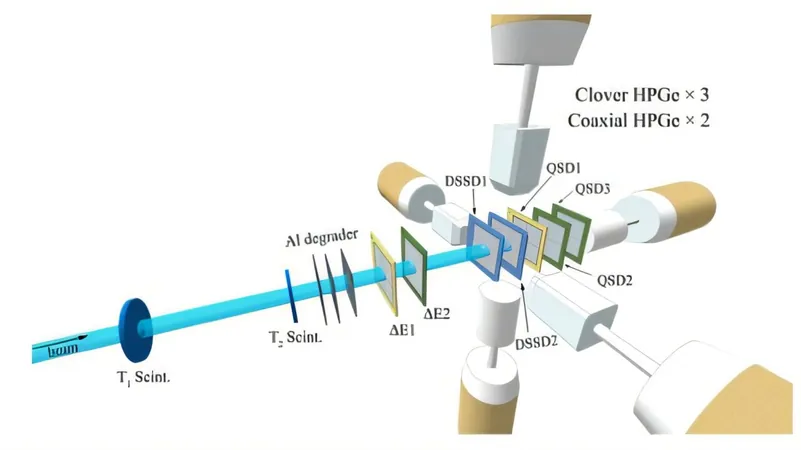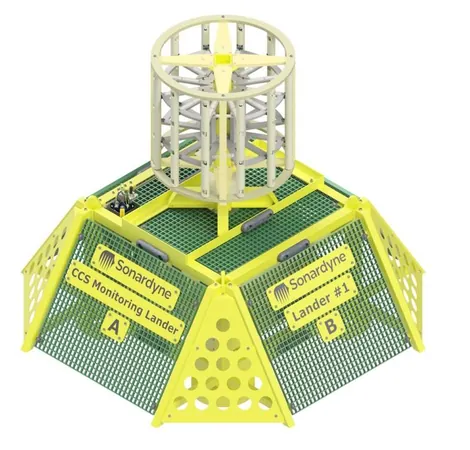
Revolutionary Digital Detector Array Transforms Charged-Particle Decay Research
2025-04-29
Author: Daniel
Unveiling the Mysteries of Exotic Nuclei
In the realm of nuclear physics, exotic nuclei close to and beyond the proton drip line exhibit fascinating decay processes that could hold the key to understanding the fundamental forces of the universe. These processes include β-delayed proton emission, α decay, and direct proton radioactivity. However, studying these rare phenomena has long been a challenge due to their elusive nature.
Game-Changing Detection Technology
A groundbreaking study published in "Nuclear Science and Techniques" showcases an advanced detection system that is set to revolutionize research on exotic decay. By combining a silicon detector array with high-purity germanium (HPGe) detectors and a cutting-edge digital readout system, researchers have created an unparalleled tool for their investigations.
Operating at a remarkable sampling rate of 250 MHz with 14-bit resolution, this new system employs waveform digitization technology to transform analog signals into precise digital data. This allows scientists to accurately capture critical information regarding energy, timing, and position of decay particles — all while understanding the γ-ray coincidence correlations. Such capabilities enable high-precision tracking of charged-particle decay.
Unlocking Short-lived Nuclear Secrets
The system's ability to process waveforms in real time and utilize programmable trigger logic allows for the reconstruction of decay processes in even the shortest-lived nuclei. Sophisticated pulse-shape analysis algorithms effectively distinguish between different charged particles, such as protons and α particles, based on their unique pulse signals. Compared to traditional systems, this digital approach not only boosts data acquisition efficiency but also enhances measurement accuracy.
Proving Its Worth in Experiments
To put their innovative system to the test, researchers conducted β-decay experiments on the proton-rich nucleus 32Ar using the Radioactive Ion Beam Line (RIBLL1) at Lanzhou's Heavy Ion Research Facility (HIRFL). The results were impressive, demonstrating the system's capability to resolve intricate decay structures, providing invaluable data for studies on exotic nuclear configurations.
A Bright Future for Nuclear Research
The system's high sensitivity and low detection threshold — around 500 keV for protons — makes it ideal for exploring rare decay modes, such as β-delayed two-proton emission. Looking ahead, the research team aims to upgrade this detector array into a robust platform at the High-Intensity heavy-ion Accelerator Facility (HIAF). This upgraded facility will expand research capabilities, allowing for groundbreaking studies into exotic nuclear structures, superheavy nuclei decay properties, and critical nuclear astrophysics reactions.



 Brasil (PT)
Brasil (PT)
 Canada (EN)
Canada (EN)
 Chile (ES)
Chile (ES)
 Česko (CS)
Česko (CS)
 대한민국 (KO)
대한민국 (KO)
 España (ES)
España (ES)
 France (FR)
France (FR)
 Hong Kong (EN)
Hong Kong (EN)
 Italia (IT)
Italia (IT)
 日本 (JA)
日本 (JA)
 Magyarország (HU)
Magyarország (HU)
 Norge (NO)
Norge (NO)
 Polska (PL)
Polska (PL)
 Schweiz (DE)
Schweiz (DE)
 Singapore (EN)
Singapore (EN)
 Sverige (SV)
Sverige (SV)
 Suomi (FI)
Suomi (FI)
 Türkiye (TR)
Türkiye (TR)
 الإمارات العربية المتحدة (AR)
الإمارات العربية المتحدة (AR)